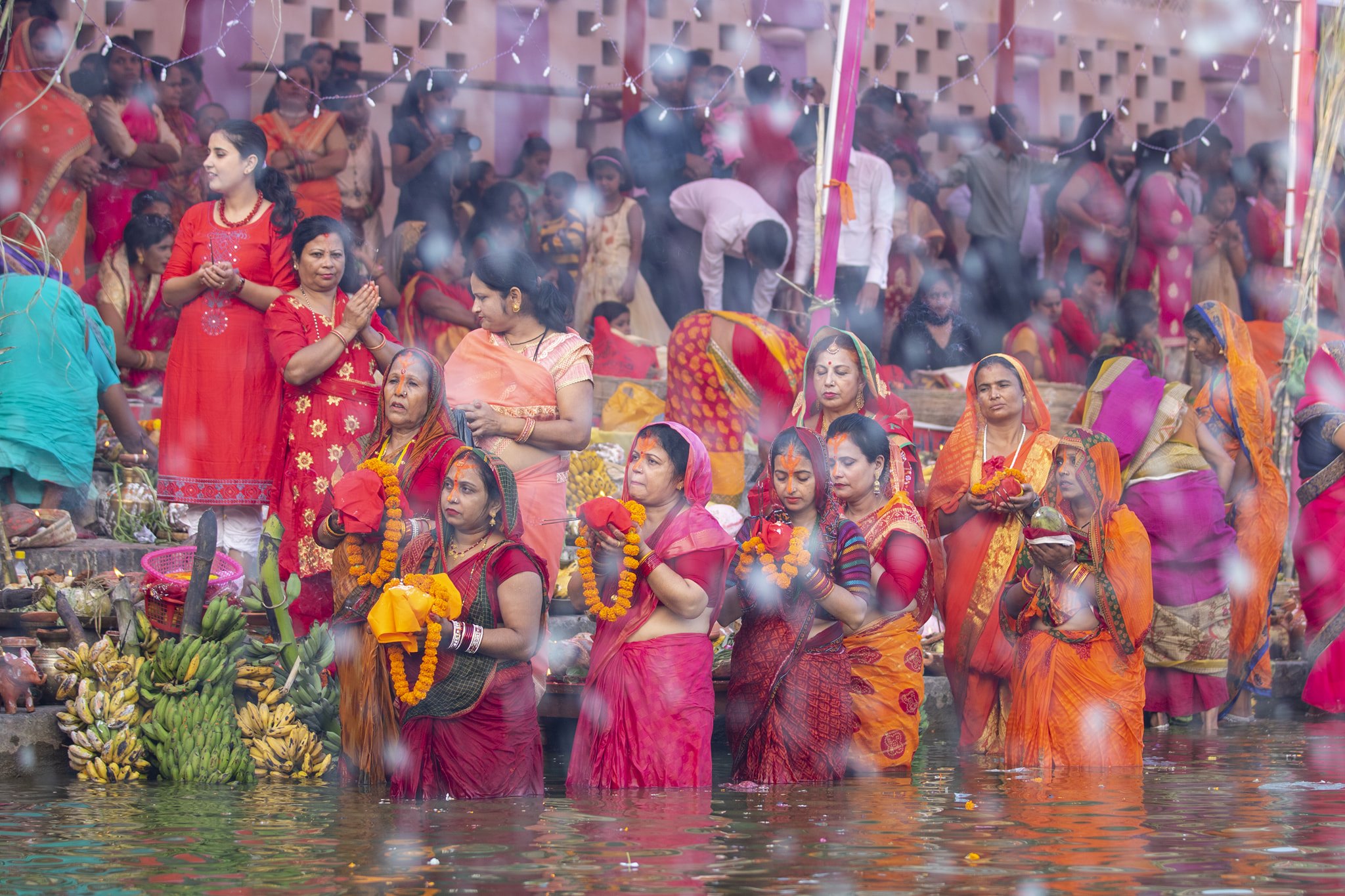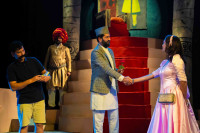Culture & Lifestyle
Sun, songs and Chhath celebrations
The festival spans four days, starting from the fourth day of the waxing moon to the seventh day in the month of Kartik, as per the lunar calendar.
Nityanand Mandal
Kera je pharal ghaurme ohipar suga madarai
Marbou re sugaba dhanusha se suga gire murajhai
This song narrates the story of a parrot attempting to eat bananas meant for the Chhath festival, which is observed with great care and purity. Chhath celebrations revolve around offering homage to the Sun. According to popular legends, if someone contaminates the offerings by consuming them before they are presented to the gods, they risk being cursed with skin diseases like leprosy. Even the parrots flying around the plantain tree are criticised in the song.
Throughout this festival, all activities are accompanied by specific songs—whether it's the preparation of worship materials or visits to ponds and rivers for sun-god worship. These songs convey messages of fraternity, love, non-violence, humanity and companionship. The Chhath Festival, predominantly celebrated by Hindus in Nepal's southern plains, is now observed throughout the country. The festival involves offerings made during both sunrise and sunset.
Mithila has a rich cultural heritage dating back to the ancient times. Its vibrant culture is also distinctly unique. Throughout the year, Maithili life pulses with the anticipation of numerous festivals, demanding thorough preparation. The locals eagerly look forward to these festivities, with Chhath being one of the grandest celebrations.

Janakpur celebrates this festival splendidly, contributing to the flourishing tourism in the region. The festivities primarily take place at sacred ponds and rivers such as Ganga Sagar, Dhanush Sagar, Aragaja Sar, Dasharatha Talaw, Biharkunda, Agnikunda, Dudhamati and the Jalad River. Besides Janakpur, Chhath is also celebrated in Birgunj, Rajbiraj, Kathmandu and other cities where a significant number of Maithil-Madheshi reside. In recent times, people from other communities have also embraced the celebration.
The Sun holds a revered place in all civilisations as a visible deity. While the rising sun is worshipped universally, Maithili individuals also worship the setting sun. On the day of Chhath, devotees enter the water to offer prayers to the setting sun. They spend the entire night on the banks of ponds or rivers and offer prayers to the rising sun the next morning. Alongside the sun, they worship Chhath Parameshwari (goddess), seeking her blessings for a healthy and happy life. The goddess is believed to protect against leprosy and skin diseases, bless infertile couples with children and ensure overall well-being, fraternity, prosperity, social goodwill, happiness and peace for her devotees and the community as a whole.
The festival spans four days, starting from the fourth day of the waxing moon to the seventh day in the month of Kartik, as per the lunar calendar. It's also observed in the month of Chaitra, known as Chaitee Chhath, but with less grandeur compared to the Kartik celebration.
The initial day of the festival, called Nahan-Khan or Arba-Arbain, marks the devotees getting their nails cut. From this day onwards, they abstain from fish, meat, onion, millet and lentils. Purification is sought through bathing. The second day, known as Khadana, involves devotees refraining from both food and water. Molasses pudding is prepared in a new oven at night, and devotees offer it as prasad, sharing it with their neighbours and relatives.

On the third day of the festival, known as Sajhuka-Arghya, people make offerings to the setting sun. The entire village gathers near ponds, rivers, and streams, carrying worship materials in bamboo baskets filled with treats like thakuwa, bhushwa, perukiya and khajuriya made from rice and wheat flour. The basket includes fruits such as bananas, sugarcane, apples and coconuts, all presented to the setting and rising sun. Various worship materials are required, such as koshiya, kurbar, dhakana, kantari and suppa (nanglo), as well as dagari and changera, with the former made of soil and the latter from bamboo.
The final day of the festival, known as Bhoraka-Arghya or Paran, repeats the rituals of the third day. The only distinction is that while the setting sun is worshipped on the third day, on the final day, it's the rising sun that receives the offerings during the Arghya ceremony.
Legend has it that Sati Anasuya, the wife of sage Atri, celebrated the Chhatha festival, leading to her having a truthful, cheerful and dutiful husband, and a blissful conjugal life. Similarly, Draupadi worshipped Chhathimaiya for the safety of the Pandavs when they were in hiding in the Mahabharat, leading to the recovery of their lost kingdom.
Traditional folk musicians play instruments like dhol, pipahi and sahenai at the banks of rivers and ponds. Women narrate stories related to the Sun, and devotees can be seen in the middle of rivers or ponds, joining their hands in concentrated prayer.
To truly comprehend the mysterious and intricate Maithili culture, one must experience it by stepping onto its soil and spending some time living among the Maithilis.




 17.12°C Kathmandu
17.12°C Kathmandu
.jpg&w=200&height=120)














